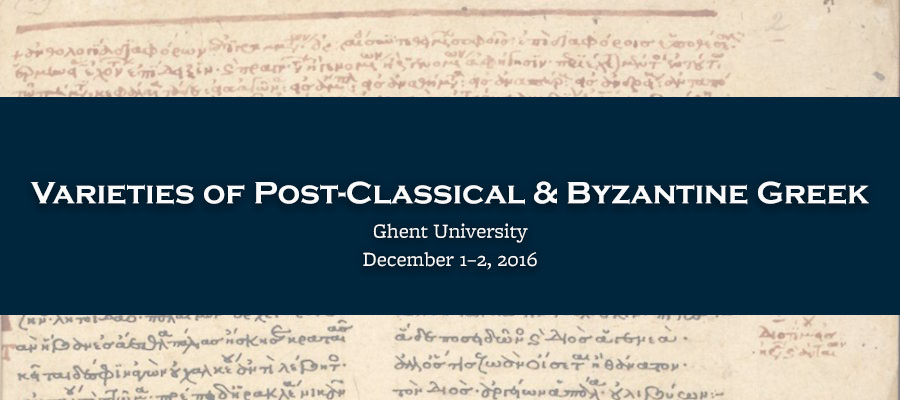Varieties of Post-Classical and Byzantine Greek, Ghent University, December 1–2, 2016
For a large part of the twentieth century, linguistic variation has received little attention. With the work of William Labov and others, however, heterogeneity in language again became a topic of interest: within the newly founded discipline of sociolinguistics, scholars have investigated the correlationship between linguistic variants and contextual variables such as age, gender, social class, social distance, etc. In actual language use, however, variants (and to some extent, variables) do not occur in an isolated fashion; rather there is patterned heterogeneity. In this spirit, scholars have described the existence of various lects such as chronolects, dialects, idiolects, ethnolects, genderlects, regiolects, sociolects, technolects, etc. in a great number of languages.
The aim of this conference is to investigate varieties of Post-Classical and Byzantine Greek, a topic of considerable interest among various members of the Greek section at Ghent University. Whereas some research has been done in this area, especially when it comes to Post-Classical Greek (e.g. Janse 2007 on New Testament Greek, Horrocks 2007 on levels of writing, Torallas-Tovar 2010 on Greek in Egypt, Nachergaele 2015 on idiolect, Bentein 2015 on register), a more systematic discussion of these varieties has yet to take place – despite the great potential of our Post-Classical and Byzantine sources.
The organisers invite all Greek linguists to submit a one-page English abstract. Next to the discussion of specific varieties, we consider the following issues of particular interest:
- What linguistic models can be used for the description and analysis of varieties?
- What is the relationship between different dimensions of variation, for example between the diachronic and the diastratic dimension?
- What role do idiolects play for the description of language variation?
- To what extent do non-congruent features (i.e. features belonging to different, or even opposed varieties) occur in texts?
- What is the relevance of and relationship between documentary and literary texts as sources of variety?
- At which linguistic levels (phonological, morphological, syntactic, lexical) can varieties be described?
